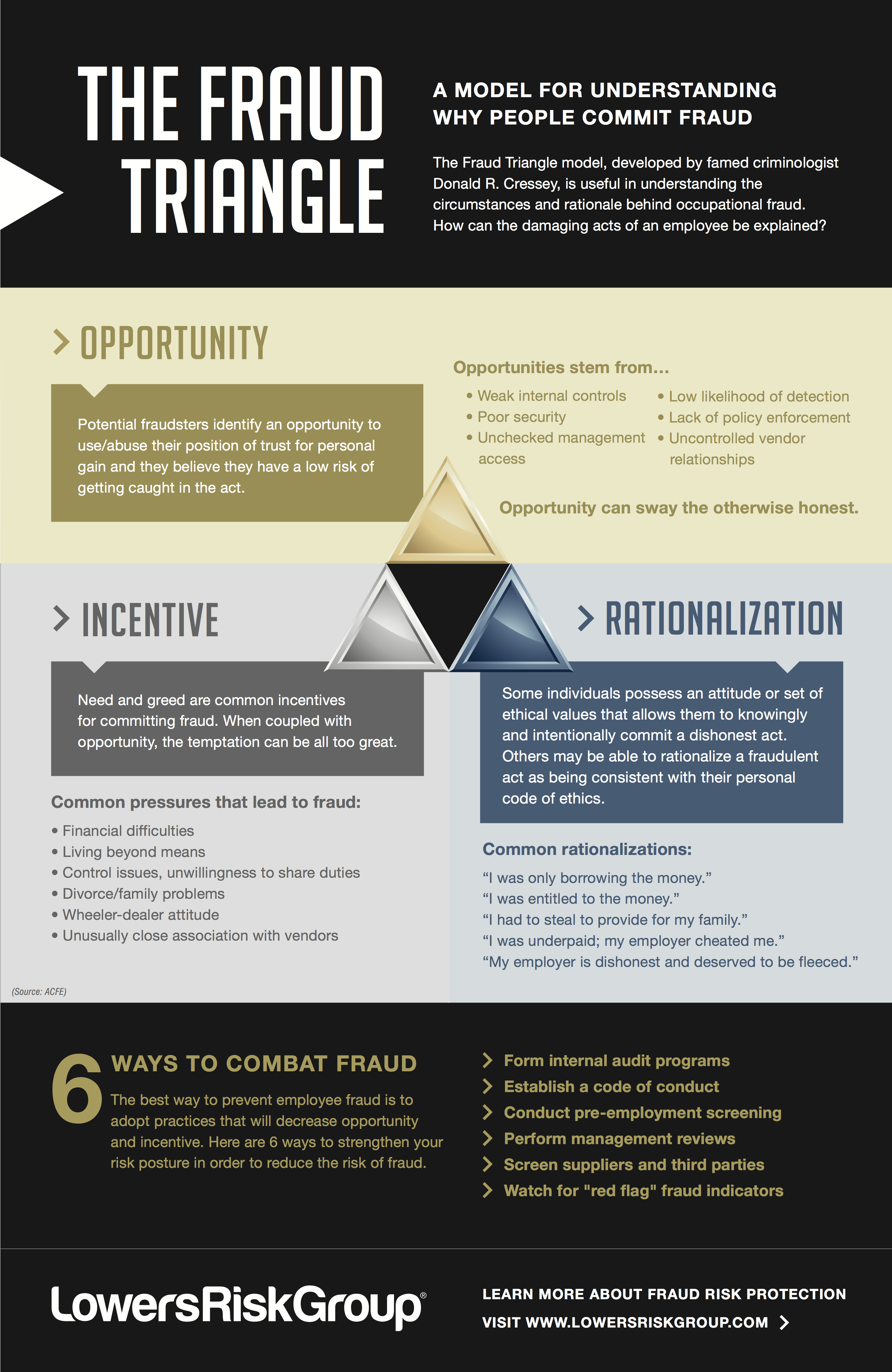The Fraud Triangle [Infographic]

According to ACFE estimates, fraud costs organizations fully 5% of annual top-line revenue. This enormous cost is serious enough, but it is compounded by the fact that fraud is a hidden crime that erodes an organization’s capacity from within.
Consequences can go beyond monetary losses to inflict damage on morale, trust and transparency. These kinds of costs endure far beyond the triggering event.
Recognition is the First Step in Fighting Fraud
In 1973, criminologist Donald Cressey first published his theory about fraud, highlighting the now famous “fraud triangle”, which says fraud occurs when the fraudster feels financial pressure, his or her organization presents an opportunity, and the person can rationalize the theft.
The first few words of his hypothesis capture the essence of this crime, and why it is difficult to confront: “Trusted persons become trust violators…” In other words, there is an internal conversion that turns an employee (at any level) into a thief.
The value of the fraud triangle is that it helps us to look at the objective factors that have to be present for fraud to occur. Recognizing these objective factors helps to define actions you can take to help prevent fraud, partly through organizational policy controls and partly through managing the relationship with employees to encourage openness and trust.
Our latest infographic summarizes the factors that must be present for fraud to occur, and gives you a few ideas about how to combat it.

Click to view full version and download PDF.
For more information, explore our fraud investigation and loss prevention services, or contact us for a fraud prevention consultation.